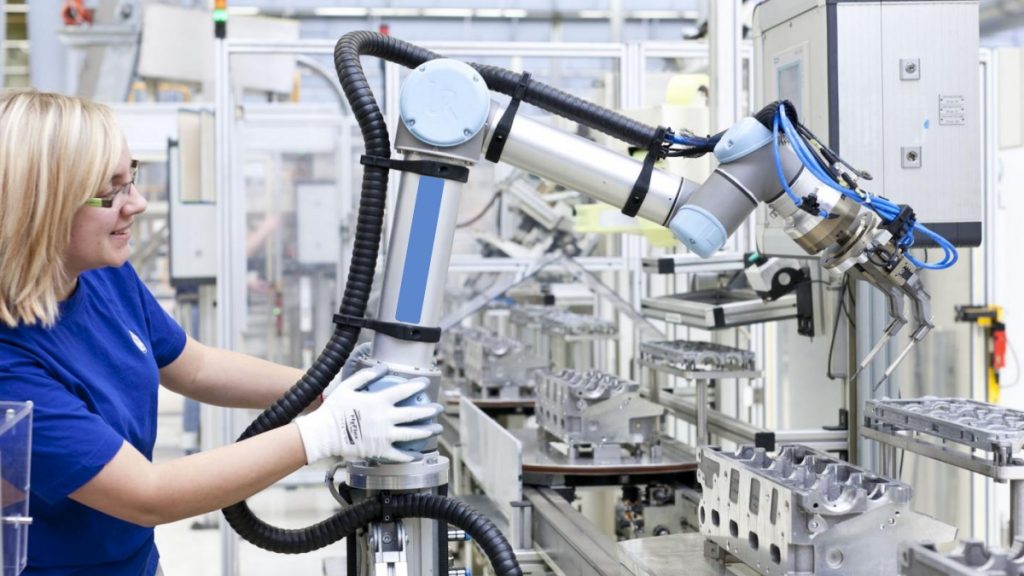Milling is a common process in many manufacturing companies. Many companies use different machines for this process. CNC machines are the most commonly used in milling. As robotics manufacturing and use have transformed, milling robots are now a common entity in many manufacturing companies.
Manufacturers are enjoying the benefits that come with the adoption of milling robots in their operations. Like other manufacturing operations that have been automated with robots, you can do the same for your milling operations.
Here are some of the benefits you are likely to enjoy by acquiring a milling robot for your operations.
High Levels Of Flexibility
When you use a milling robot, you can expect to enjoy high levels of flexibility from the robot. The milling robot arm can easily turn at different angles due to its six arms. This helps you to deliver products in different shapes quite easily.
With this advantage, a manufacturer can increase the number of products they have in their portfolio fast and cheaply. This translates into a more attractive financial position for the company as sales increase coupled with lower production costs.
A robot also provides lots of flexibility on the type of machining tools you can use with your robot. The robot can easily handle all types of materials you use in milling. It can work with molds made from clay, mill fiberglass, and even foam as easily as it can mill marble. Robots can easily regulate their torque to work even with the softest of materials without breaking them.
Lower Costs
The use of robots in your factory brings down your production costs significantly. First, the cost of acquiring a robot is much lower than the cost of acquiring a traditional milling machine. With a lower cost of equipment acquisition, the factory can run profitably.
Further, the cost of production in the factory is also significantly lower. Robots work faster and are more accurate than the normal milling machine. Further, with the increased production flexibility from the robot, you can produce more at a lower cost in your factory.
In addition, robots can handle more advanced tasks by themselves. This means that you need fewer people to handle a single task. Further reducing the cost of production.
Once the robots are through with milling activities in the factory, they can be reassigned to other tasks. This means that you don’t have to buy a milling robot and another robot for other tasks. This helps small manufacturing entities to save on equipment acquisition costs.
With fewer breakdowns, you don’t need the regular service and maintenance on your robot. You can thus keep your production process running continuously. Increasing your production levels and bottom line easily.
Robots Are Easy To Program
Another advantage that you will gain from acquiring a milling robot is its ease of use. Compared to traditional milling machines such as the CNC machine, robots are easy to understand and use.
Unlike traditional milling machines, you don’t need to be a specialized robot programmer to program the robot. With a little training factory workers can learn how to operate the robot and program it for milling.
Enhanced Accuracy And Precision
Robots provide enhanced accuracy and precision in milling operations. A robot provides advanced calibration in every project it works on. This is because the robot can easily reference its position in the working process. This ensures that the final product is made according to the specifications provided to the robot.
In addition, milling robots have multiple arms. These arms are linked serially. This also enhances the accuracy and precision of robots as they are in production. You don’t have to keep repositioning the robot arms during the milling process. This allows for faster and accurate production.
Compact Size
Robots are compact. This means that they will take up only a small amount of space in your factory. This makes it easy to move the robot from one part of the factory to another to handle the different tasks it can be assigned to.
For a small manufacturing enterprise, they may find it difficult to acquire large factory space to run their operations. With a robot, you will not require a dedicated space for a milling machine. This ensures that it is easy to use the available space optimally.
Applications Of Milling Robots In Industry
Material Removal
One of the most common applications for milling robots in the industry is material removal. Milling robots are used for tasks such as grinding, milling, deburring, drilling routing, and other material removal tasks.
Milling robots have inbuilt sensors to sense and deliver the right pressure to every tool and material that they are working on. To the factory, this reduces waste and improves the production process and capacity.
With the right end of arm tooling for your milling robot, you can easily complete material removal tasks in a variety of materials. You can work on steel, wood, aluminum, foam, clay, and fiberglass.
This allows a variety of industries to buy milling robots for enhanced production and other benefits.
Finishing
For a uniform finish on your products, you can use milling robots in your factory. They can be used for the perfect polishing task on all your products.
Using a robot for this task ensures uniformity in your products. Robots also complete the task faster than human workers or other machines. This means that you can finish more products over a given period of time.
Diverse industries such as automotive, aerospace, and even furniture-making businesses are using milling robots to finish their products as perfectly as possible.
Conclusion
Milling robots are growing more popular in the manufacturing industry. More and more manufacturers are seeing the benefits they can gain with the use of robots in their production process. They can be easily applied for use in diverse sectors of manufacturing. Therefore, any manufacturing organization can acquire a milling robot. With the ability to also handle other tasks, the robot becomes an essential tool to the manufacturer.




